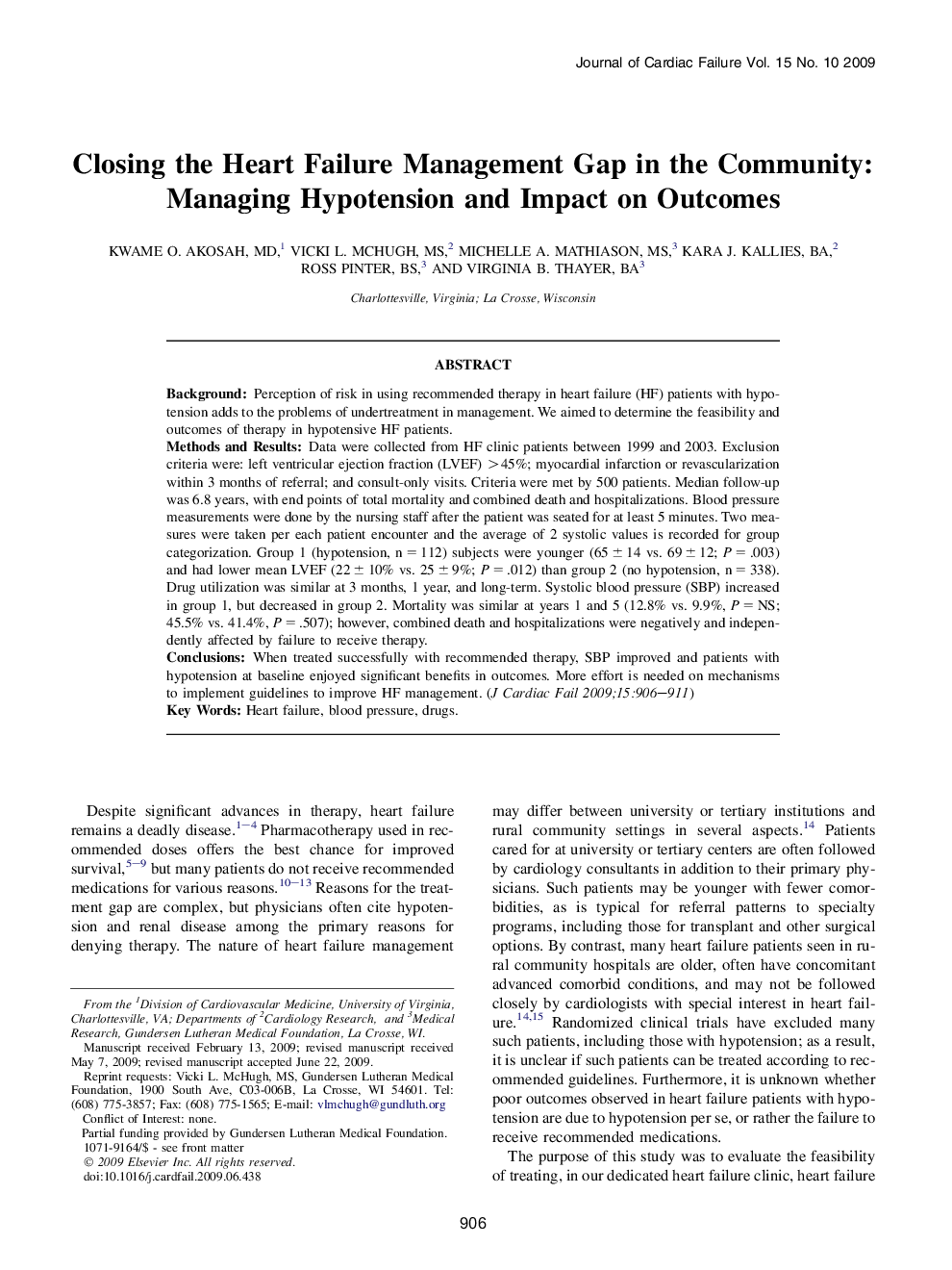| کد مقاله | کد نشریه | سال انتشار | مقاله انگلیسی | نسخه تمام متن |
|---|---|---|---|---|
| 2961289 | 1178392 | 2009 | 6 صفحه PDF | دانلود رایگان |

BackgroundPerception of risk in using recommended therapy in heart failure (HF) patients with hypotension adds to the problems of undertreatment in management. We aimed to determine the feasibility and outcomes of therapy in hypotensive HF patients.Methods and ResultsData were collected from HF clinic patients between 1999 and 2003. Exclusion criteria were: left ventricular ejection fraction (LVEF) >45%; myocardial infarction or revascularization within 3 months of referral; and consult-only visits. Criteria were met by 500 patients. Median follow-up was 6.8 years, with end points of total mortality and combined death and hospitalizations. Blood pressure measurements were done by the nursing staff after the patient was seated for at least 5 minutes. Two measures were taken per each patient encounter and the average of 2 systolic values is recorded for group categorization. Group 1 (hypotension, n = 112) subjects were younger (65 ± 14 vs. 69 ± 12; P = .003) and had lower mean LVEF (22 ± 10% vs. 25 ± 9%; P = .012) than group 2 (no hypotension, n = 338). Drug utilization was similar at 3 months, 1 year, and long-term. Systolic blood pressure (SBP) increased in group 1, but decreased in group 2. Mortality was similar at years 1 and 5 (12.8% vs. 9.9%, P = NS; 45.5% vs. 41.4%, P = .507); however, combined death and hospitalizations were negatively and independently affected by failure to receive therapy.ConclusionsWhen treated successfully with recommended therapy, SBP improved and patients with hypotension at baseline enjoyed significant benefits in outcomes. More effort is needed on mechanisms to implement guidelines to improve HF management.
Journal: Journal of Cardiac Failure - Volume 15, Issue 10, December 2009, Pages 906–911